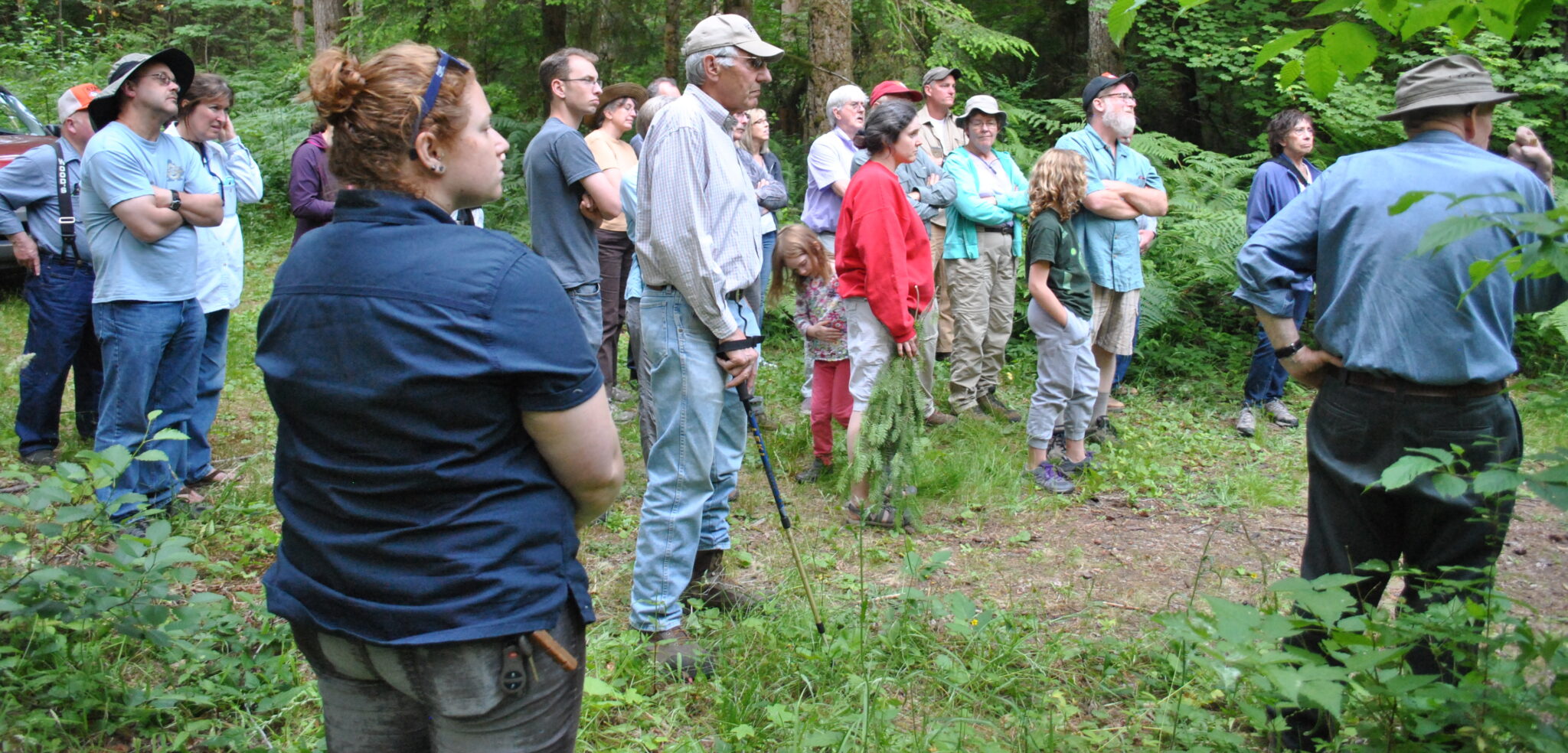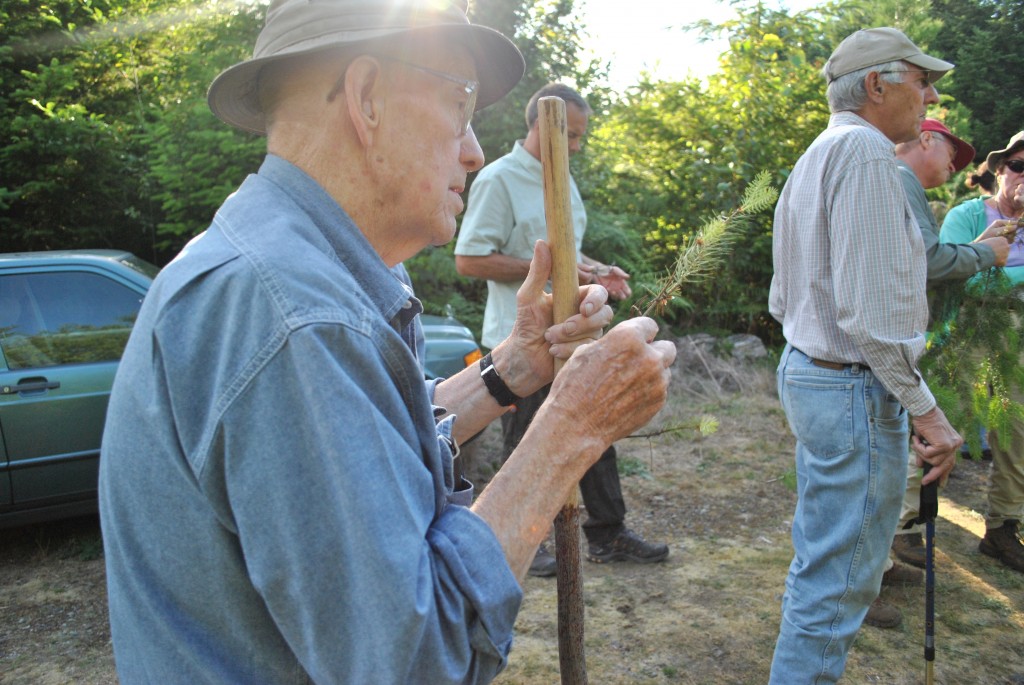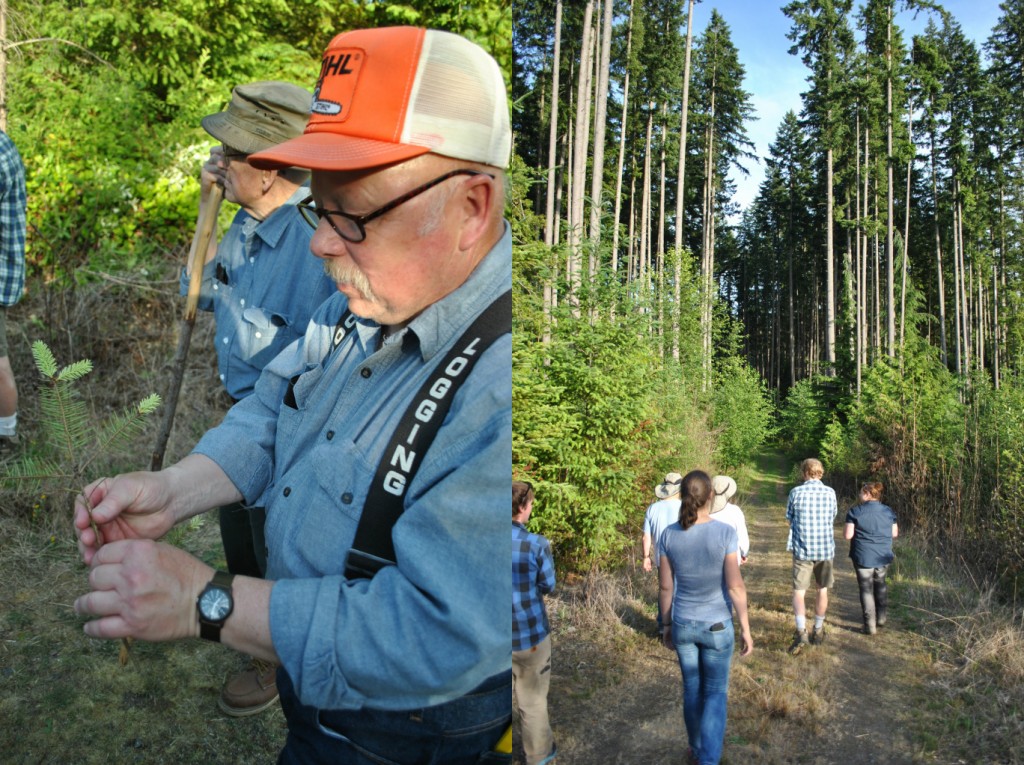Crystal Lake Tree Farm – a community and a classroom

On June 23, I was fortunate enough to attend a forest health workshop at the location. It was a lovely night to be outside as we tromped up and down the road of Crystal Lake Tree Farm. Settled on 400 acres in suburban Woodinville, WA, its location is merely one special aspect of the tree farm. The tree farm is a sustainably-managed community forest that surrounds Crystal Lake, where 66 families live and own a lot of their own land. I soon met Ron Munro, the man behind this unique place.

Unassuming and vastly knowledgeable, he reminds me of my own grandfather as he tells me of the unique history of how the community and the tree farm came to be. The land originally began as the Seattle Rod and Gun Club in 1927, and following the Great Depression, membership dropped so much that the club was forced to lease some of the land to the State of Washington. After World War II the area around the lake gradually developed into permanent residential housing plots. The land was logged and not actively managed until 1980, when Mr. Munro and his wife moved to Crystal Lake. Ron clarifies to me, however, that his original motivation for moving here was simply to watch the ducks on the lake. His presence on the land goes beyond passive enjoyment, Mr. Munro has been a driving force in turning largely neglected woodland areas into impressive conifer forests on 65-year rotations. For 35 years he has worked on this land to not only restore its timber but also to form a tight-knit community of those who share a common interest in stewarding the land.
Sharing this beautiful forest through education and community events is of great importance to the members of the community as well. Tree Farm Day is an event held annually where members from the Crystal Lake community and beyond come together and have a barbecue, celebrate the forest, and plant trees. Hakan, a community member, explains that events like Tree Farm Day and the event of the night foster a sense of fellowship that is essential to his experience at Crystal Lake.
Hosted by WSU Forestry Extension, the workshop centered around the pervasive diseases present in Douglas Fir dominated forests. Forest Pathologist Amy Ramsey lead us through the forest, first explaining the importance of needle retention and the prevention of foliar disease for the growth of trees. As she clips samples from both a healthy and infected tree, she shows that needles grow every year, with the youngest and most tender needles at the top and the older and more sparse cohorts at the bottom. While periodic loss of needles is unavoidable, the healthy tree still retains some of its needles into the fourth-year growth, whereas the infected tree only has 1.5 year retention. In this case, the diseased tree will be unable to grow because the loss of needles prevents proper nutrition and healthy resistance to disease. While this isn’t an ideal situation, foliar disease thrives in humid environments, so thinning up the area and allowing the micro-climate to become drier and warmer due to sun exposure can help manage diseases like this.
As we continued up the road, we were introduced to laminated root rot, a common disease to which Douglas Fir is also susceptible. Identifiable by the wood’s crumbly, porous texture, Amy emphasizes that a stressful event like drought weakens the trees defenses and leaves it vulnerable to root rot and eventually bark beetles. In dealing with root rot, the only feasible method is to completely eliminate susceptible species like Douglas Fir from the area and replace the stand with a resistant species, such as Alder or Cedar. Continuing to plant Douglas Fir will only “provide food” for the fungus. In this way, utilizing species diversity and the immunity that different species have to any given species in your stands even before root rot takes its toll will improve the resilience of your forest and ensure that not all your trees will succumb to an outbreak.

At the conclusion of the workshop, I eagerly continued the conversations with residents about the significance of their forest. Ozzie, a newer member to the community, moved here three years ago to provide a safe place for his children to grow up. He fondly recollects taking his daughters out to plant cedar trees upon arriving at Crystal Lake Tree Farm. “Those trees are the same age as my daughters, so it’s fun to see them both grow up together.”
Hakan and Ozzie also point out that decisions are democratically made by way of the various committees within the community. For example, it was decided that one-half of the lakeside and potential residential areas were to never be developed. To them, this sense of cohesion and engaged decision-making is part of what makes this place so distinct because it keeps the land from becoming over-developed.
To Hakan, the most valuable part of living at Crystal Lake is the opportunity to teach kids why being a steward to the land is important. He says that he likes to show others a genuine working forest because it is an opportunity not typically available for many children living in urban environments.
“For most kids in the city,” he explains, “they only get to go to parks – and for some, not even that.”
That evening, I left Crystal Lake Tree Farm not only touched by the beauty of the forest but by the genuine love the residents have for their land. For the members of Crystal Lake Tree Farm, active management and restoration of the forest is essential because they are taking care of the land for the coming generations. This dedication to the land as well as to each-other is truly inspiring.

Leave a Reply